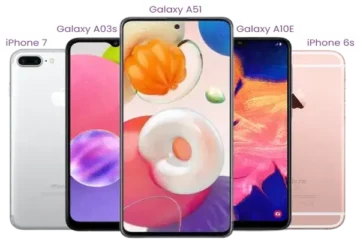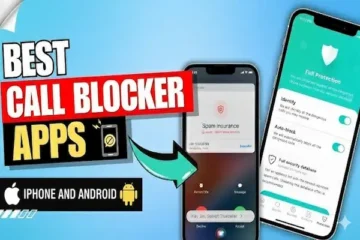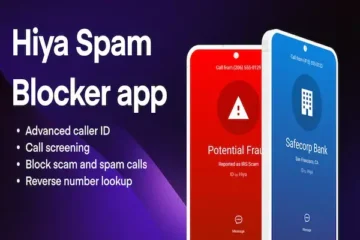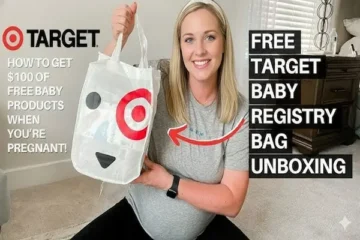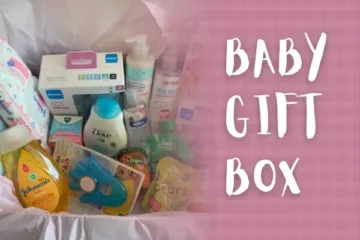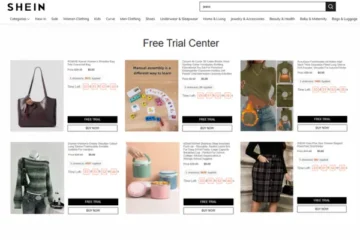How to Get Your Free New Government Smartphone
Discover how to qualify and apply for a free government phone in 2025.
Advertising
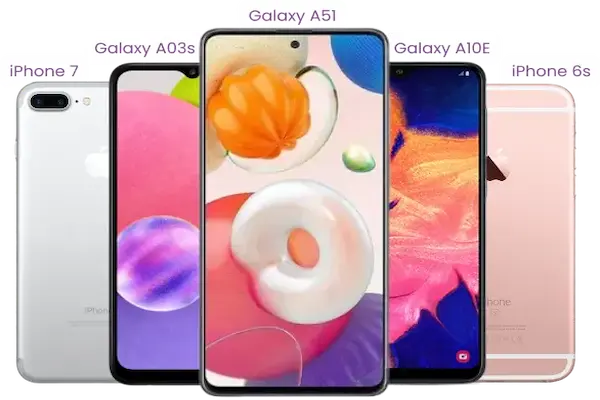
Free New Government Smartphone with Lifeline Program
Discover how to qualify, eligibility, documents, providers, and application.
HOW TO APPLYYou will remain in the same website
Learn income and program eligibility, best providers, benefits, and how to avoid scams.
Eligibility Requirements for Free Government Phones
To qualify for a free government phone, you need to meet specific income limits or be part of certain government assistance programs.
You must also provide proof to confirm your eligibility. These rules help ensure the program supports people who truly need help staying connected.
Income Qualifications and Federal Poverty Guidelines
Your household income must be at or below 135% of the Federal Poverty Guidelines to qualify. These guidelines change depending on where you live and the size of your household.
| Household Size | Income Limit (Contiguous States & D.C.) | Alaska | Hawaii |
|---|---|---|---|
| 1 | $20,331 | $25,394 | $23,369 |
| 2 | $27,594 | $34,479 | $31,725 |
| 3 | $34,857 | $43,565 | $40,082 |
| 4 | $42,120 | $52,650 | $48,438 |
For each additional person, add $7,263 in the contiguous states, $9,086 in Alaska, or $8,357 in Hawaii.
You must count the total income of everyone who lives at your address and shares expenses. This includes all forms of income like wages, benefits, and assistance payments.
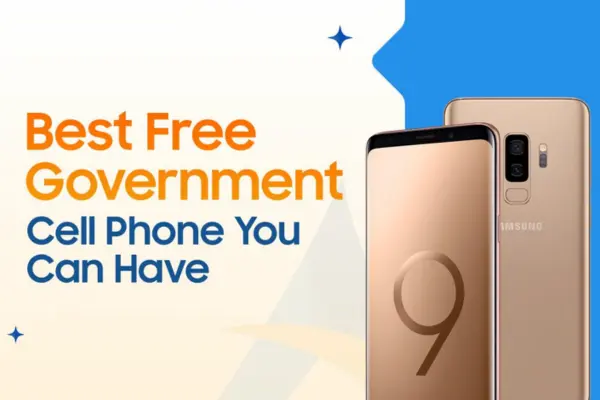
Participation in Government Assistance Programs
You automatically qualify if you or someone in your household participates in certain programs. These include:
- Supplemental Nutrition Assistance Program (SNAP)
- Medicaid
- Supplemental Security Income (SSI)
- Federal Public Housing Assistance (FPHA)
- Veterans Pension or Survivors Benefit
- Tribal-specific programs such as Tribal TANF
Being enrolled in these programs shows financial need, which meets the eligibility requirement for free government phones.
Proof of Eligibility and Required Documentation
When you apply, you must show proof of income or program participation. For income proof, acceptable documents include:
- Recent pay stubs
- Last year’s tax return
- Social Security or Veterans Administration benefits statement
If qualifying by program participation, provide documents like:
- Benefit award or approval letter
- Statement of benefits
- Program participation card (like an EBT card for SNAP)
You also need to prove your identity with a government-issued ID and show your current address. Clear and recent documents will help speed up the approval process.
Lifeline Program: The Main Path to a Free Government Phone
You can get help with phone or internet costs through a federal program. It offers discounts and free devices based on your income or participation in government aid. Your options for service come from approved providers across the country.
Overview of the Lifeline Assistance Program
The Lifeline Assistance Program is run by the FCC to make phone and internet service more affordable for low-income households. You qualify if your income is below a certain level or if you receive government benefits like Medicaid or SNAP.
Once you apply and are approved, you must re-certify your eligibility every year to keep your benefit. The program applies to both phone and internet services, helping you stay connected for emergencies, jobs, and family.
How the Lifeline Discount Works
When you join Lifeline, you get a monthly discount that lowers your phone or internet bill. The standard discount is up to $9.25 each month.
If you live on federally recognized tribal lands, the discount is higher—up to $34.25 per month. This discount applies to services from providers participating in the program. You still pay any fees above these amounts, but your bill will be significantly cheaper.
Lifeline Program Provider Options and Nationwide Coverage
You choose a phone or internet company that offers the Lifeline discount from many approved providers nationwide. Some companies also provide free phones as part of this program.
You can switch providers or use the Lifeline benefit with your current service if they participate. Availability varies by state, but most areas in the U.S. have at least one Lifeline provider. Check with your local providers to find your options.
Affordable Connectivity Program and Recent Changes
The Affordable Connectivity Program (ACP) helps eligible households get discounted internet and devices. Recent updates have affected how many people can access these benefits and what kinds of services and discounts are available.
Role of the Affordable Connectivity Program
The ACP is a program run by the Federal Communications Commission (FCC). It gives eligible households a discount on monthly internet bills and helps with the cost of connected devices like laptops or tablets.
You can get up to $30 off your internet bill each month. If you live on Tribal lands, this discount can be as high as $75 per month. There is also a one-time device discount of up to $100 when you buy through approved providers.
The program aims to make internet access affordable for work, school, and healthcare. To qualify, your household income must be below 200% of the federal poverty level, or you need to participate in specific government assistance programs like SNAP or Medicaid.
Current ACP Status and Its Impact
As of 2025, the ACP is still active. Congress has funded the program through the end of the year, so you can apply or continue receiving benefits if you qualify.
More than 20 million households use the ACP now. The program has also grown to include more internet providers, giving you more choices when applying your benefit.
The application process is easier than before. You can apply online at AffordableConnectivity.gov or directly through a participating internet provider. This helps you save money on your internet service efficiently.
Differences Between ACP and Lifeline
The ACP and Lifeline programs are both run by the FCC but offer different types of help.
The ACP focuses mainly on discounts for broadband internet and devices. It supports households needing affordable internet for online services.
Lifeline focuses on lowering monthly phone or internet costs, offering discounts that include wireless phone services.
You can only get one monthly discount from either program, not both. But some people may qualify for both and choose the program that fits their needs best. Knowing which program applies to your situation helps you get the right support.
Step-by-Step Guide to Applying for a Free Government Phone
You need to follow specific steps to complete your application. This includes submitting your personal information, providing proof of eligibility, and understanding how the approval and delivery process works. Knowing these details will help you avoid delays.
Online Application Process
Start by visiting the official Lifeline National Verifier website. Create an account using your email address. You will then enter your personal details, such as your name, address, and social security number (last 4 digits).
Next, verify your eligibility by confirming your income level or participation in qualifying government programs like SNAP or Medicaid. Upload digital copies of your documents directly on the site.
Once you submit your application, the system usually processes it quickly. You can expect to receive a verification decision within minutes or a few days. Applying online is the fastest and easiest method.
Submitting Required Documents
You must provide proof that you qualify for the program. This includes a government-issued ID like a driver’s license or passport. You also need to supply proof of income or documented participation in an approved assistance program.
Don’t forget to include proof of your current address, such as a utility bill or lease agreement. Make sure your documents are clear and readable. If applying by mail, include photocopies of all required papers.
Submitting accurate paperwork is essential to avoid delays or denials. Organize your documents before starting the application to ensure everything is ready.
How Approval and Phone Delivery Works
After your application is approved, you’ll receive a notification from the Lifeline program or participating provider. You can then select a phone plan from a list of approved carriers in your area.
The provider will send your free phone by mail. Delivery times can vary but typically take 7–10 business days. Once you get your phone, follow the activation instructions included with it.
Activate your service by calling the provider or through their website. After activation, set up voicemail and save important contacts. This process ensures you have working phone service with no monthly cost.
What You Get With Your Free Government Phone
When you qualify for a free government phone, you receive more than just a device. You get access to basic communication tools designed to keep you connected through calls, messages, and internet data. Some plans also offer extra features like mobile hotspot use and limited international calling.
Free Smartphone Devices and Options
Your free government phone usually comes with an entry-level smartphone. Many providers offer popular brands, but most devices are basic models rather than high-end phones like the latest iPhone.
The phone is often a touchscreen device with essential apps pre-installed, allowing you to call, text, and use the internet. You won’t have to pay for the phone itself—the cost is covered by the provider’s subsidy.
Depending on your provider, you might have a choice between different phone models or colors. If you already have a compatible phone, some programs let you bring your own device and just get the service.
Included Talk, Text, and High-Speed Data Plans
Your plan usually includes a set amount of talk minutes and text messages at no cost each month. Most programs offer basic unlimited talk and text, but data allowances vary.
High-speed data is available with some plans, but the amount can be limited, often around a few gigabytes per month. Once you use your high-speed data, your connection may slow down.
You can usually use your data for browsing, apps, and social media. If you need internet on your home or computer, some providers offer bundled plans that include broadband service at a discount.
Mobile Hotspot and International Calling Features
Many free government phone plans include mobile hotspot capabilities. This lets you share your phone’s data with other devices like laptops or tablets, which is helpful if you don’t have internet access elsewhere.
Hotspot data is often part of your monthly data allowance, so use it wisely to avoid slowdowns once you reach your limit.
Some plans allow limited international calling to select countries without extra charges. The availability of this feature depends on the service provider and your plan. If you make frequent international calls, check which countries are covered before signing up.
Participating Providers and Additional Benefits
You can choose from different phone companies that work with the government program to get your free phone. These providers offer various plans and phones, so it’s good to know your options. Some also give you extra help like customer support and flexible service choices.
Major Providers: Gen Mobile, Mint Mobile, and Others
Gen Mobile and Mint Mobile are two popular providers that take part in the Lifeline program. Gen Mobile offers free or low-cost phones with unlimited talk, text, and data plans. Their network covers most parts of the U.S., so you usually get good service.
Mint Mobile also offers affordable plans with fast 5G data. While Mint Mobile is mostly a prepaid carrier, they sometimes have special offers for Lifeline customers depending on your state.
You can find other providers too. The number varies by state but often includes 3 to 10 options. Each provider may offer different phones like Samsung or iPhone models, and data speeds can vary. Check the providers in your area to compare plans, phones, and coverage.
Additional Support and Customer Service
Participating providers usually give you customer support to help set up your phone or solve service problems. Support can come as phone, chat, or email assistance.
Some providers require yearly recertification to keep your free service. Providers will also guide you through this process, so you don’t lose your benefits.
Many providers let you switch to a new plan or provider every 60 days if you’re not happy. This helps you find the best service and phone for your needs without extra cost.
Always ask what extra features a provider offers. Some include data rollover, hotspot access, or free voicemail services that improve your phone use.
